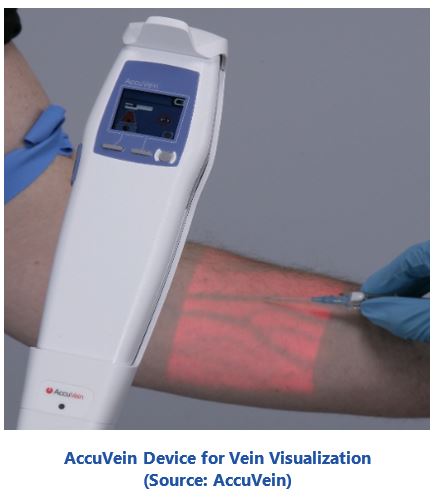

Despite many notable improvements in medical technologies, the healthcare industry continues to face many challenges. Thanks to all the advancements in the medical field, the average life expectancy of humans continues to improve globally. However, at the same time, this puts ever-increasing pressure on healthcare professionals, nurses in particular.
While best practices have been established for the optimum nurse-to-patient ratio, nurses, must often care for too many patients. This is due to a combination of factors, including a shortage of trained nurses and budgetary constraints at many for-profit medical businesses. But technology can offer a lending hand by helping nurses and other healthcare providers perform their duties more efficiently and safely. Among others, augmented reality (AR) technology is garnering a lot of attention here.
When nurses must care for too many patients, this not only results in sub-optimal care for patients but could put both the patients and nurses in harm’s way. A recent case of an elderly patient's death at Vanderbilt University Medical Center in Nashville, Tenn., highlighted the issue. In this particular case, the medical center’s nurse mistakenly gave the patient a paralytic drug instead of an anti-anxiety medicine, which led to the patient’s death. The nurse was arrested and charged with reckless homicide.
Mistakes can happen in any profession, however, in certain industries, such as healthcare, mistakes can sometimes lead to serious consequences. Therefore, extra measures should be taken to minimize such errors. Mistakes tend to happen in busy and stressful situations. Therefore, appropriate staffing should be among the top priority for healthcare institutes. The healthcare industry realizes the need to have more nurses to provide better care to patients but struggles to find qualified personnel. According to the US Bureau of Labor Statistics, more than 400,000 new registered nurses will be needed by 2026 in the US alone. Furthermore, it’s anticipated that over 500,000 nurses will retire by 2022, therefore, the industry needs around one million new nurses, according to the American Nurses Association.
Obviously, the industry needs to encourage more people to pursue a career in nursing. Technology can also offer a lending hand here. While technology is not a substitute for nurses, it can help them perform their duties more efficiently and safely. Among various technologies, augmented reality (AR) is garnering a lot of attention in various industries, including healthcare, to help the workforce improve their productivity.
AR employs displays, cameras, and various types of sensors to augment the user’s real-world environment with artificial perceptual experience. Most AR applications - through smart devices such as smart phones, tablets, and smart glasses - overlay digital information and graphics onto the user’s real-world view. Pokemon Go and Snapchat filters are some of the most popular AR applications. While AR is not a new concept, advancements in areas such as computer vision, sensing technologies, data storage, displays, and software technologies have now made AR a much more practical solution for consumer, commercial, and industrial adoption. Although, still in the early stages of the AR revolution, we are seeing an explosion of AR startups, thanks to all the interest by the venture capital world.
The healthcare industry has been quick to realize the benefits of AR. The industry has shown major interest in the technology and, as a result, many AR applications have already been developed for the healthcare world to address some of its major challenges, including staffing shortages. Below, we discuss some of the areas, where AR can help.

ARC Advisory Group clients can view the complete report at ARC Client Portal
If you would like to buy this report or obtain information about how to become a client, please Contact Us
Keywords: Augmented Reality (AR), Healthcare Industry, Nurses, Remote Support, ARC Advisory Group.

